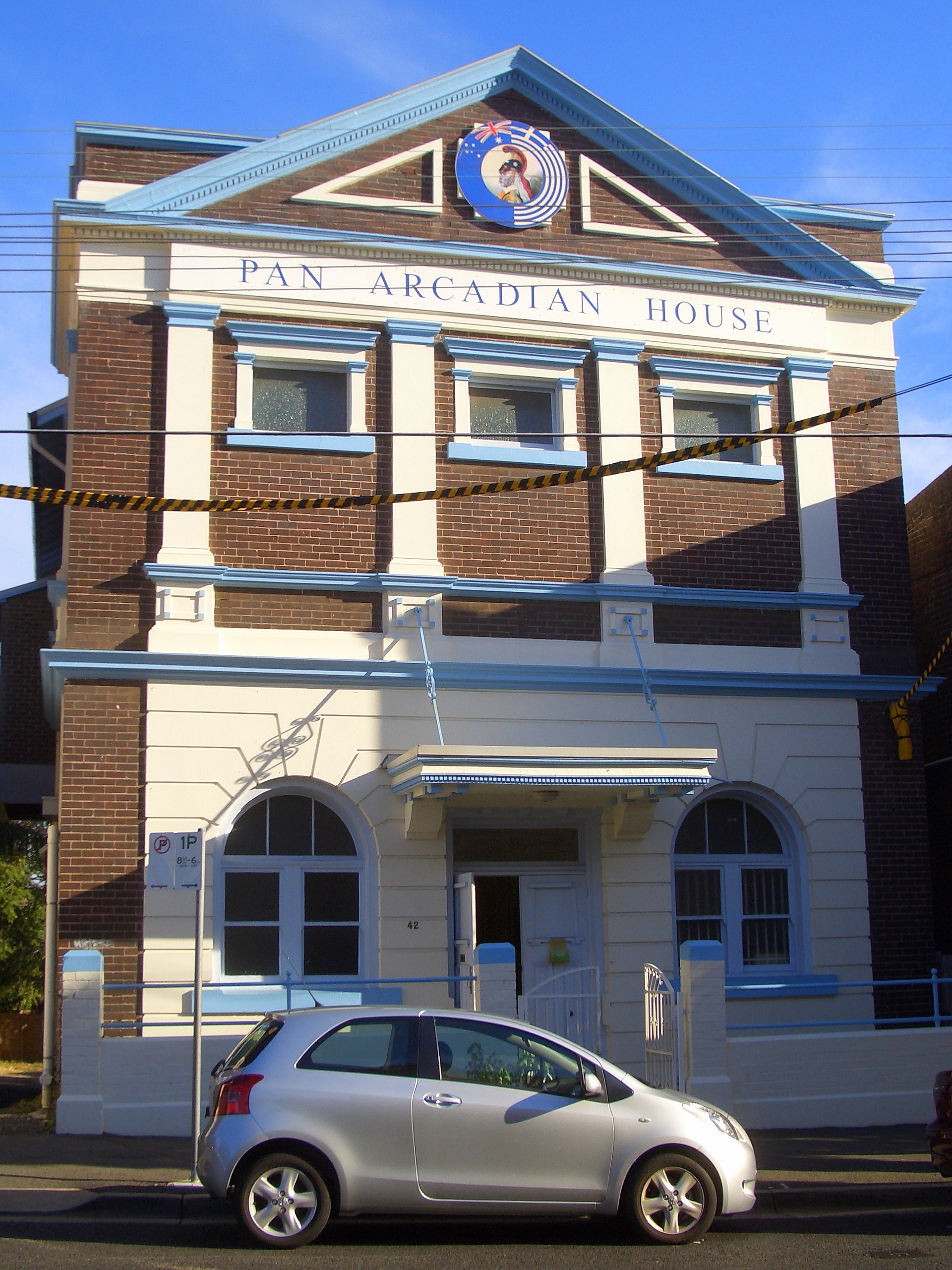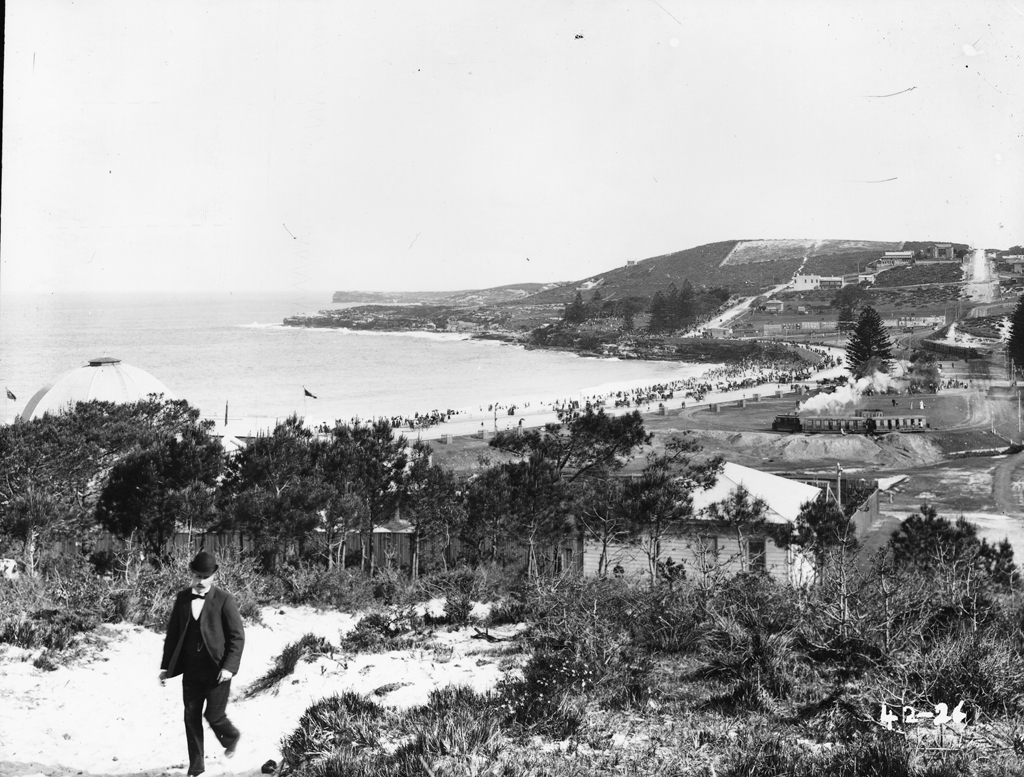|
Randwick Post Office
The Randwick Post Office is a heritage-listed former post office located at 124 Alison Road in the Sydney suburb of Randwick in the City of Randwick local government area of New South Wales, Australia. The former post office was designed by Walter Liberty Vernon in his capacity as NSW Government Architect and was built from 1897 to 1898 by W. B. Chessell. It is also known as Randwick Post Office (former) and Jubilee Fountain. The property is owned by Australia Post (Federal Government). It was added to the New South Wales State Heritage Register on 23 June 2000. History Indigenous history Pre-1780s the local Aboriginal people in the area used the site for fishing and cultural activities - rock engravings, grinding grooves and middens remain in evidence. In 1789 Governor Arthur Phillip referred to "a long bay", which became known as Long Bay. Aboriginal people are believed to have inhabited the Sydney region for at least 20,000 years.Turbet, 2001. The population of Abor ... [...More Info...] [...Related Items...] OR: [Wikipedia] [Google] [Baidu] |
Randwick Post Office, March 2019
Randwick may refer to: Australia *Randwick, New South Wales, a suburb of Sydney *City of Randwick, a local-government area in Sydney *Randwick Racecourse Royal Randwick Racecourse is a racecourse for horse racing located in the Eastern Suburbs (Sydney), Eastern Suburbs of Sydney, New South Wales. Randwick Racecourse is Crown Land leased to the Australian Turf Club and known to many Sydney ra ... * Randwick DRUFC, a rugby-union club in Randwick, New South Wales New Zealand * Randwick Kingfishers, a rugby-league club based in Lower Hutt United Kingdom * Randwick, Gloucestershire, a village {{disambig, geo ... [...More Info...] [...Related Items...] OR: [Wikipedia] [Google] [Baidu] |
Dharug
The Dharug or Darug people, formerly known as the Broken Bay tribe, are an Aboriginal Australian people, who share strong ties of kinship and, in pre-colonial times, lived as skilled hunters in family groups or clans, scattered throughout much of what is modern-day Sydney. The Dharug, originally a Western Sydney people, were bounded by the Kuringgai to the northeast around Broken Bay, the Darkinjung to the north, the Wiradjuri to the west on the eastern fringe of the Blue Mountains, the Gandangara to the southwest in the Southern Highlands, the Eora to the east and the Tharawal to the southeast in the Illawarra area. Darug language The Dharug language, now not commonly spoken, is generally considered one of two dialects, the other being the language spoken by the neighbouring Eora, constituting a single language. The word ''myall'', a pejorative word in Australian dialect denoting any Aboriginal person who kept up a traditional way of life, originally came from the Dharug ... [...More Info...] [...Related Items...] OR: [Wikipedia] [Google] [Baidu] |
Bay (architecture)
In architecture, a bay is the space between architectural elements, or a recess or compartment. The term ''bay'' comes from Old French ''baie'', meaning an opening or hole."Bay" ''Online Etymology Dictionary''. http://www.etymonline.com/index.php?allowed_in_frame=0&search=bay&searchmode=none accessed 3/10/2014 __NOTOC__ Examples # The spaces between posts, columns, or buttresses in the length of a building, the division in the widths being called aisles. This meaning also applies to overhead vaults (between ribs), in a building using a vaulted structural system. For example, the Gothic architecture period's Chartres Cathedral has a nave (main interior space) that is '' "seven bays long." '' Similarly in timber framing a bay is the space between posts in the transverse direction of the building and aisles run longitudinally."Bay", n.3. def. 1-6 and "Bay", n.5 def 2. ''Oxford English Dictionary'' Second Edition on CD-ROM (v. 4.0) © Oxford University Press 2009 # Where there a ... [...More Info...] [...Related Items...] OR: [Wikipedia] [Google] [Baidu] |
Hipped Roof
A hip roof, hip-roof or hipped roof, is a type of roof where all sides slope downwards to the walls, usually with a fairly gentle slope (although a tented roof by definition is a hipped roof with steeply pitched slopes rising to a peak). Thus, a hipped roof has no gables or other vertical sides to the roof. A square hip roof is shaped like a pyramid. Hip roofs on houses may have two triangular sides and two trapezoidal ones. A hip roof on a rectangular plan has four faces. They are almost always at the same pitch or slope, which makes them symmetrical about the centerlines. Hip roofs often have a consistent level fascia, meaning that a gutter can be fitted all around. Hip roofs often have dormer slanted sides. Construction Hip roofs are more difficult to construct than a gabled roof, requiring more complex systems of rafters or trusses. Hip roofs can be constructed on a wide variety of plan shapes. Each ridge is central over the rectangle of the building below it. The tri ... [...More Info...] [...Related Items...] OR: [Wikipedia] [Google] [Baidu] |
Balustrade
A baluster is an upright support, often a vertical moulded shaft, square, or lathe-turned form found in stairways, parapets, and other architectural features. In furniture construction it is known as a spindle. Common materials used in its construction are wood, stone, and less frequently metal and ceramic. A group of balusters supporting a handrail, coping, or ornamental detail are known as a balustrade. The term baluster shaft is used to describe forms such as a candlestick, upright furniture support, and the stem of a brass chandelier. The term banister (also bannister) refers to a baluster or to the system of balusters and handrail of a stairway. It may be used to include its supporting structures, such as a supporting newel post. Etymology According to the ''Oxford English Dictionary'', "baluster" is derived through the french: balustre, from it, balaustro, from ''balaustra'', "pomegranate flower" rom a resemblance to the swelling form of the half-open flower (''illus ... [...More Info...] [...Related Items...] OR: [Wikipedia] [Google] [Baidu] |
Sandstone
Sandstone is a clastic sedimentary rock composed mainly of sand-sized (0.0625 to 2 mm) silicate grains. Sandstones comprise about 20–25% of all sedimentary rocks. Most sandstone is composed of quartz or feldspar (both silicates) because they are the most resistant minerals to weathering processes at the Earth's surface. Like uncemented sand, sandstone may be any color due to impurities within the minerals, but the most common colors are tan, brown, yellow, red, grey, pink, white, and black. Since sandstone beds often form highly visible cliffs and other topographic features, certain colors of sandstone have been strongly identified with certain regions. Rock formations that are primarily composed of sandstone usually allow the percolation of water and other fluids and are porous enough to store large quantities, making them valuable aquifers and petroleum reservoirs. Quartz-bearing sandstone can be changed into quartzite through metamorphism, usually related to ... [...More Info...] [...Related Items...] OR: [Wikipedia] [Google] [Baidu] |
Ashlar
Ashlar () is finely dressed (cut, worked) stone, either an individual stone that has been worked until squared, or a structure built from such stones. Ashlar is the finest stone masonry unit, generally rectangular cuboid, mentioned by Vitruvius as opus isodomum, or less frequently trapezoidal. Precisely cut "on all faces adjacent to those of other stones", ashlar is capable of very thin joints between blocks, and the visible face of the stone may be quarry-faced or feature a variety of treatments: tooled, smoothly polished or rendered with another material for decorative effect. One such decorative treatment consists of small grooves achieved by the application of a metal comb. Generally used only on softer stone ashlar, this decoration is known as "mason's drag". Ashlar is in contrast to rubble masonry, which employs irregularly shaped stones, sometimes minimally worked or selected for similar size, or both. Ashlar is related but distinct from other stone masonry that is ... [...More Info...] [...Related Items...] OR: [Wikipedia] [Google] [Baidu] |
Postmaster-General Of New South Wales
The Postmaster-General of New South Wales was a position in the government of the colony of New South Wales. This portfolio managed the postal department of the New South Wales Government and was in charge of all postal and communications services in the colony prior to the Federation of Australia, from 1835 to 1901. Upon Federation, Section 51(v) of the Constitution of Australia gave the Commonwealth exclusive power for "postal, telegraphic, telephonic, and other like services". History The first Postmaster of New South Wales, Isaac Nichols, was appointed by the military junta following the overthrow of Governor Bligh in the Rum Rebellion. Nichols retained the position when Governor Macquarie arrived in 1810, holding it until his death in 1819. The post office was re-organised in 1835, with postmaster James Raymond being appointed as Postmaster-General, responsible for the various post offices throughout the colony. Raymond's replacement, Francis Merewether was appointed to t ... [...More Info...] [...Related Items...] OR: [Wikipedia] [Google] [Baidu] |
Government Of New South Wales
The Government of New South Wales, also known as the NSW Government, is the Australian state democratic administrative authority of New South Wales. It is currently held by a coalition of the Liberal Party and the National Party. The Government of New South Wales, a parliamentary constitutional monarchy, was formed in 1856 as prescribed in its Constitution, as amended from time to time. Since the Federation of Australia in 1901, New South Wales has been a state of the Commonwealth of Australia, and the Constitution of Australia regulates its relationship with the Commonwealth. Under the Australian Constitution, New South Wales, as with all states, ceded legislative and judicial supremacy to the Commonwealth, but retained powers in all matters not in conflict with the Commonwealth. Executive and judicial powers New South Wales is governed according to the principles of the Westminster system, a form of parliamentary government based on the model of the United Kingdom. Legisl ... [...More Info...] [...Related Items...] OR: [Wikipedia] [Google] [Baidu] |
The Spot, New South Wales
The Spot is a locality in south-eastern Sydney, New South Wales, Australia. The Spot is located in the south-eastern part of the suburb of Randwick, around the intersection of Perouse Road and St Pauls Street. It is a vibrant part of Randwick and consists of a collection of shops, restaurants, cafes and a cinema. The Spot is a heritage conservation area and has many heritage listed buildings, such as the Ritz Cinema and Pan Arcadian House, a 1930s Masonic Temple and most notably the facade of shops on the corner of Perouse Road and St Pauls Street which follows a curved pattern, necessary for the tram route which used to extend to Coogee Beach.Schedule 5, . The Royal Hotel and Randwick shopping centre are a short distance away. The area is well served by public transport with regular buses from the Sydney CBD and Bondi Junction. Name The Spot lies at the geographic centre of a residential suburb that some maps identify as “St Pauls”. The post office located at The Spo ... [...More Info...] [...Related Items...] OR: [Wikipedia] [Google] [Baidu] |
Coogee, New South Wales
Coogee is a beachside suburb of local government area City of Randwick 8 kilometres south-east of the Sydney central business district, in the state of New South Wales, Australia. It is typically associated as being part of the Eastern Suburbs region. The Tasman Sea and Coogee Bay along with Coogee Beach lie towards the eastern side of the suburb. The boundaries of Coogee are formed mainly by Clovelly Road, Carrington Road and Rainbow Street, with arbitrary lines drawn to join these thoroughfares to the coast in the north-east and south-east corners. History Aboriginal The name Coogee is said to be taken from a local Aboriginal word ''koojah'' which means "smelly place". Another version is ''koo-chai'' or ''koo-jah'', both of which mean "the smell of the seaweed drying" in the Bidigal language, or "stinking seaweed", a reference to the smell of decaying kelp washed up on the beach. Early visitors to the area, from the 1820s onwards, were never able to confirm exactl ... [...More Info...] [...Related Items...] OR: [Wikipedia] [Google] [Baidu] |


Saunders_Quarry-1.jpg)



